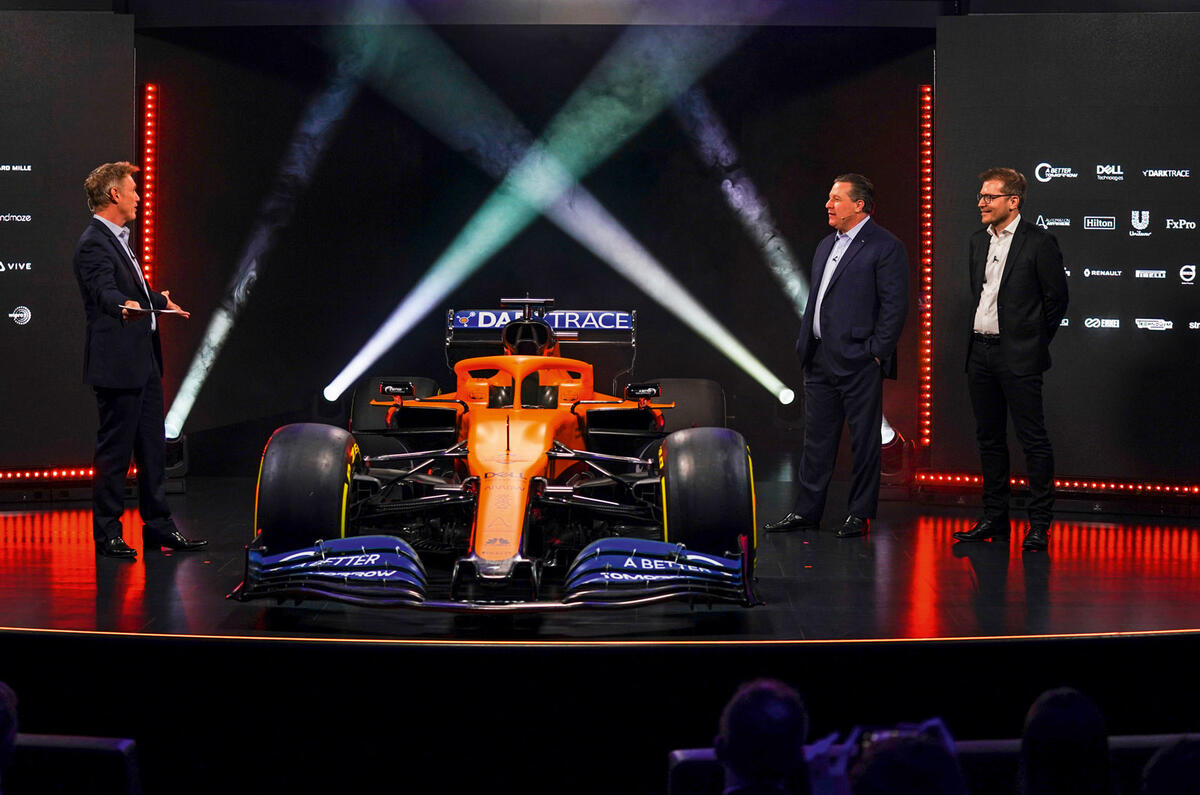These are tricky times for Formula 1 teams. The white-heat intensity of another busy season is upon them, but more than usual they will be diverted by what comes next. The revolutionary new chassis regulations set for 2021 require a clean-sheet design approach and are a huge drain on time and resources.
For Mercedes, Ferrari and Red Bull, there are titles to be won while ensuring that balls aren’t dropped for the impending new era. For the others, new rules offer a rare and golden chance to gain a big chunk of competitive ground – but they can’t afford to forget the present, either. It’s a multi-million-dollar juggling act.
“We don’t want to sacrifice 2020 to get a better start for 2021,” said McLaren team principal Andreas Seidl at the launch of the MCL35. The British outfit enjoyed a much-needed rejuvenation last season, finishing fourth in the teams’ standings as best of the rest behind the ‘big three’. That hard-earned momentum must not be lost, especially for an independent team that has to pay for its engines.
“We want to make the next step in 2020,” continued Seidl. “Similar to everyone else, we want a strong start to the season, because that might make it easier to switch some resources to the next car.”
Beyond 2021, F1 is looking further into the future, to its next-generation power solution, which is due in 2025 as the wider world’s zero-emissions targets move closer. Last week, we touched upon the drive towards electrification and how F1 might eventually be forced to embrace it. But that’s not how leading figures necessarily see it. There’s a strong belief in the combustion engine; one fascinating stream of research, for example, revolves around super-efficient, high-revving, small-capacity two strokes.
“There are lots of technologies to consider,” said McLaren’s new technical director, James Key. “Clearly it has got to be relevant, but there are alternatives [to electrification]. The energy density of fuel is incredibly high. If you could make that low- or preferably zero-emissions using a different type of fuel, all the technologies around combustion engines are there. Of all the industries in the world, F1, with the speed and amount of development that goes on, is well placed to find new methods of propulsion for the future.”
F1 leading, rather than following, automotive power needs: what a great way to protect motorsport from legislation that could banish it into extinction.
READ MORE
Racing lines: Bloodhound LSR run fires rockets and hearts
Racing lines: the future of F1 could benefit from a Formula E tie-up
Racing lines: F1 pulls in the public; car makers? Not so much




Join the debate
Add your comment
Perspective and hypocrisy
Growing demand for SUVs was the second largest contributor to the increase in global CO2 emissions from 2010 to 2018, an analysis has found.
In that period, SUVs doubled their global market share from 17% to 39% and their annual emissions rose to more than 700 megatonnes of CO2, more than the yearly total emissions of the UK and the Netherlands combined.
So why are we talking about F1 when it amounts to "a few cars" and due to millions of pounds of investment the pinacle of vehicle efficiency?
Change is needed
Formula 1 is destined for irrelevance on engine technology. It is already weak when the forms are so restricted. KERS has little uptake in road cars, with little indication of that changing.
There may be alternatives to batteries for the future, but Formula 1 would need to start on it now if it is to be a part of. They are already too late to be battery leaders. Racing is a chance to showcase alternatives such as algae based biofuels, or manufactured from captures CO2. But it seems more focused on hanging onto what it already has.
Change.
F1 has to change, like any sport it would be boring if it didn't improve, less people would watch it, obvious you say, well, yes, so embracing new tech is the option to take, still Petrol powered, and, if you want punters to come in certain countries, make it cheaper to go and watch.
Better?